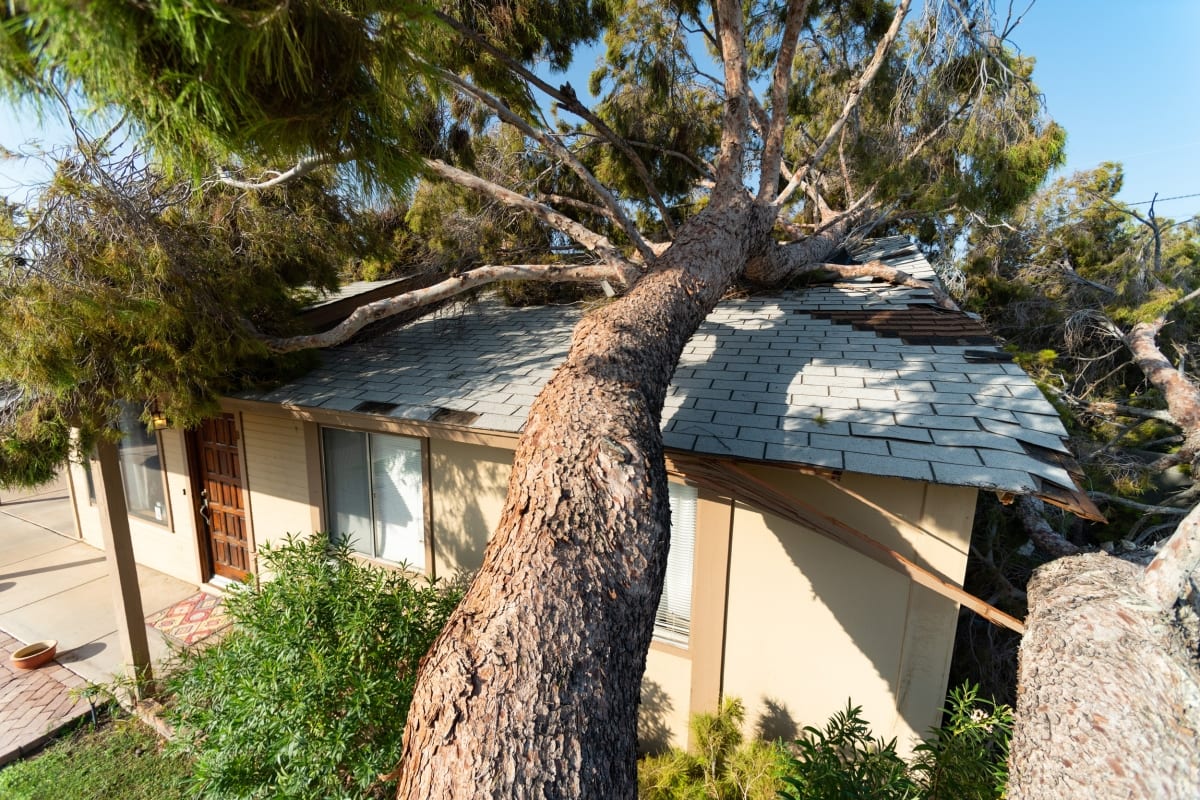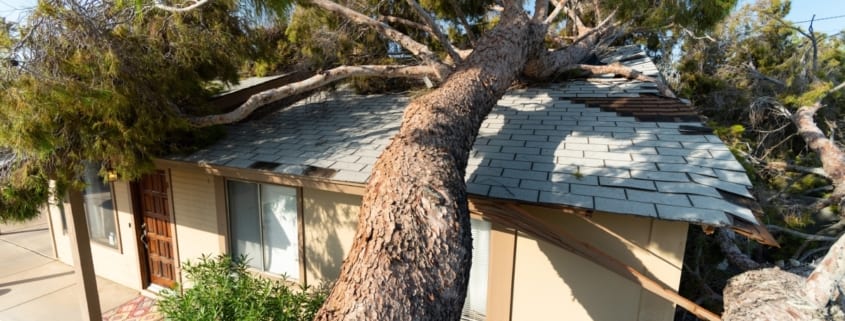What Is Hazard Insurance?

What is Hazard Insurance and How is It Used?
If you own a home and have homeowners insurance, then you are covered by hazard insurance. They are one and the same. Homeowners are typically required by mortgage lenders to carry a homeowners insurance policy, including a portion devoted to hazard coverage.
What Is Hazard Insurance?
Hazard insurance is the part of a home insurance policy that protects your home and structures like the garage from perils. Mortgage lenders who have a stake in your home need to be assured that the home has, at a minimum, coverage adequate enough to cover perils that might occur, such as a severe storm that fells a tree that crashes into your home.
Generally, hazard insurance covers the foundation, structure and roof of a home. Some policies can also cover your furnishings and belongings. Plus, there are other options to strengthen your coverage.
What Does Homeowners Insurance Cover?
Though not required by lenders, it is a good idea to have a comprehensive homeowners insurance policy that includes replacement of your personal belongings, help with legal expenses if you are sued by someone who gets hurt while in your home, and coverage of living expenses if you must relocate during repairs or rebuilding.
Homeowners insurance features distinct coverages:
- Dwelling coverage is for your home, roof and foundation.
- Loss of use covers expenses accrued if the homeowner must find other accommodations because the home is no longer habitable following a disaster.
- Additional structures include structures on your property, such as a garage, fence, deck and shed.
- Personal property covers personal belongings inside and outside the insured home.
- Personal liability coverage is for protection if someone is injured in the home and sues you.
- Medical coverage pays for medical expenses if someone is injured in the home.
What Does Hazard Insurance NOT Cover?
Some weather-related or natural events are generally excluded because the home is located in an area prone to these activities. In high-risk areas, homeowners need to adequately protect the property with coverage from a separate hazard insurance policy for such events as floods, earthquakes, mudslides and landslides.
Open Perils vs. Name Perils Policies
Hazard insurance offers two different kinds of policies: open perils and named perils.
Open peril covers all hazardous events except those specifically listed in the policy:
- Some types of water damage
- Power failure
- Earth movement
- Neglect
- Intentional loss
- Structure collapse
- Theft during a home’s construction
- Vandalism to a home that’s been vacant for 60 days or more
- Some incidences of mold, fungus or wet rot
- Mechanical breakdowns
- Wear and tear
- Smog, corrosion and rust
- Smoke from agricultural or industrial operations
- Pollutant seepage
- Birds, rodents, vermin and insects
- Animals that belong to you
- War
- Nuclear event
- Government action
- Legislation
Named peril policies cover the owner’s home and personal belongings in the face of perils listed in the policy:
- Lightning
- Fire or smoke
- Hail and wind
- Theft
- Vandalism
- Explosions
- Damage caused by vehicles
- Damaged caused by aircraft
- Riots and civil turmoil
- Freezing of the home’s systems such as air conditioning or heating
- Falling objects
- Accidental discharge of water or steam
- Damage caused by an electrical current
- Volcanic eruption
- Damages resulting from the weight of snow, ice or sleet
Reimbursement
Before you can receive benefits from a claim you have filed for covered losses, you’ll first have to pay your deductible out of pocket.
Actual cash value and replacement cost value are the kinds of reimbursement approaches available.
Actual Cash Value
An actual cash value policy is the least expensive and typically used to cover older homes. You also receive the smallest reimbursement with an actual cash value policy, which reimburses for what the insured property was worth, including wear and tear, at the time the damages occurred.
Replacement Cost Value
Replacement cost value policies are pricier. That’s because they pay for replacement of the damaged or stolen property at full value, paying the full price if you were to buy it new, with no depreciation taken into account.
How Much Does Home Insurance Cost?
A lot of variables go into determining the cost of your hazard insurance. The annual cost of a homeowners insurance policy can range from somewhere in the hundreds up to thousands of dollars. In Hawaii you would pay an average of $499 a year while the average in Oklahoma is $4,445.
If you live in hurricane country you’ll pay more or, if you’re purchasing a policy from a private insurance company, the insurance provider may exclude hurricane coverage completely. You may need to buy from a company that will provide coverage for specific perils that put your home at risk.
Besides being influenced by where you live, the amount of coverage you select for dwelling coverage, liability coverage and the deductible amount also affect your costs.
What Else Influences Cost of a Homeowners Insurance Policy?
There are several items factored into the cost of a homeowners policy. Each addresses issue that can be very costly for insurance providers.
- Proximity to and quality of the closest fire department. Fire coverage is more expensive for rural areas, which are often further away from a fire station and might be served by volunteer firefighters.
- The house is near the coast. It can be hard to find a company that will insure homes near a coastline because of risk of damage. As a result, homeowners are either dependent on government-sponsored insurance or decide to do without extensive coverage.
- Age of the house. When repairs are needed, an older home can be more costly to fix up. Repairing or replacing custom molding, plaster walls and wood floors requires specialists.
- Condition of the roof. An old roof can lead to leak damage to the structure, foundation and personal items in the home. Also, materials used for the roof are also a factor, as some, like asphalt shingles cost less to repair and replace that tiles. Conversely, replacing a roof with materials that are fire resistant can result in a discount.
- Quality of construction. An old home may not be up to code for such things as insulation or grounded electrical outlets, so if the home is involved in a fire, homeowners have to pay out of pocket to bring it up to code. An Order of Law endorsement added to your policy can help with those expenses.
- Risk of flooding. Since standard policies don’t cover flood damage. Some companies won’t even insure a house located in a flood zone. In these cases, some companies sell private flood insurance or offer coverage through the National Flood Insurance Program, which is administered by the Federal Emergency Management Agency.
- Risk of earthquakes. This is another risk standard policies don’t typically cover. Instead, some insurance companies sell earthquake endorsements, or add-ons, or completely separate earthquake insurance.
- Risk of tornadoes. If you live inland in “Tornado Alley” (South Dakota, Oklahoma Kansas, eastern Colorado, Nebraska or northern Texas) you pay higher rates, because these areas deal with yearly tornadoes. Another spot that where residents pays more for homeowners insurance is “Dixie Alley”—basically all of southeastern U.S.—due to tornado risks.
- Home has a hot tub and swimming pool, and other special features. That swimming pool you’ve always wanted will increase the amount of your homeowners insurance rates due to repair and replacement costs. Any recreational features you add will need higher liability, so you’re protected if a guest is hurt using them.
- Home’s history of claims. Every time an insurance company pays a homeowners insurance claim, they add the information to a central database called Comprehensive Loss Underwriting Exchange (CLUE). By consulting CLUE, insurers can determine how many multiple claims are part of the home’s history. The higher the number of claims, the higher the homeowners insurance rates.

 EINSURANCE
EINSURANCE EINSURANCE
EINSURANCE EINSURANCE
EINSURANCE